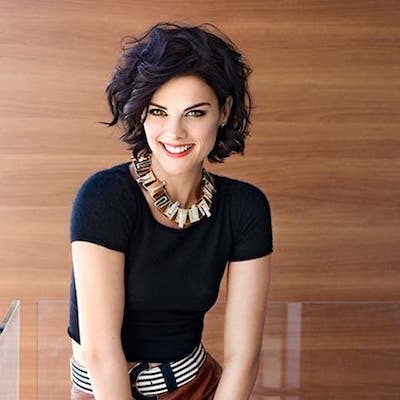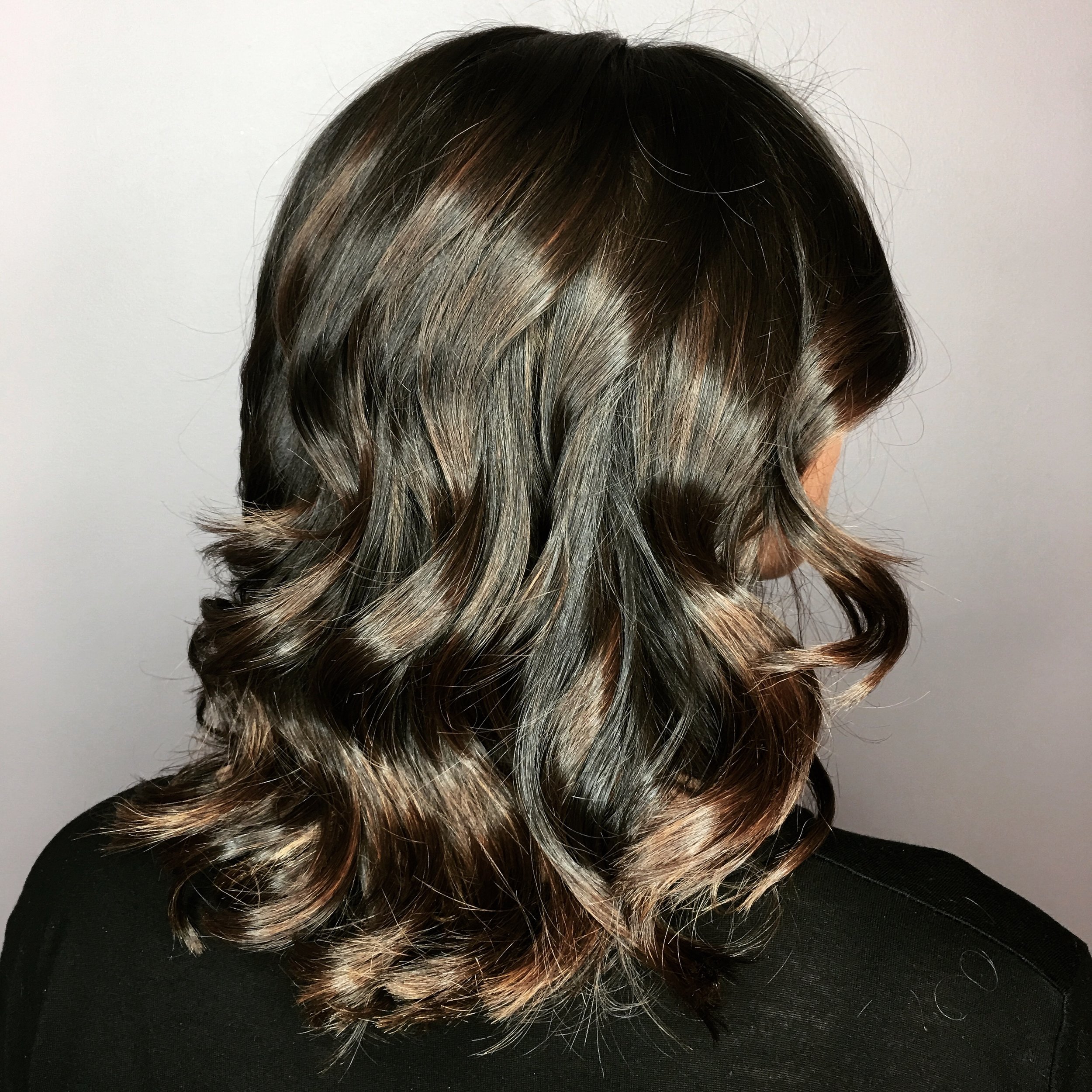By Laura Braunstein
HOW TO DETERMINE THE BEST HAIR COLOR FOR YOU
Almost every single day, I am asked for color suggestions, be it all over color or highlights/lowlights. There is actually a pretty set science to making these determinations based upon basic color theory. Here is the breakdown:
FIGURING OUT YOUR SKIN TONE
The first step is figuring out whether you have a cool or warm skin tone. Each tone then has two subcategories. Many people can identify themselves as warm vs. cool pretty easily, but the sub-characterization is where things can go awry. If you're not positive of where you generally fall however, flip your forearm over and look at your veins on the inside. If they appear blue through your skin, you have a cool skin tone. If they appear green, you have a warm skin tone.
COOL SKIN
A cool skin tone is depicted by having lighter skin for your ethnicity. While the first person who comes to mind as having cool skin is generally the Nordic blonde, and while that is usually a correct supposition, fairer African/African American women, Indian women, Latin women, etc can also have cool skin. Generally speaking, it is lack of pigment that creates a cooler shade across the board. So as it pertains to humans, lack of melanin, a dark brown to black pigment occurring in skin, hair, and eyes, equates to fairer skin. Cool skin can still have undertones of pink or yellow however, they are just less prominent tonally and sometimes not as easily deciphered as they are in warm skin.
COOL PINK SKIN
Often thought of as the rosey skin seen on cherubs and young children in baroque fine art, cool pink skin is fair skin that often looks flushed. If you are fair and have jewel toned eyes (dark blue, dark green or black) and do not tan easily, you likely have cool pink skin. You were likely born with very dark brown/black hair. This hair may have quickly turned to light blonde, but regardless it started as dark. You may also have a harsh contrast between the colors of your eyes, hair and face. Finally, you do not have warm brown or hazel eyes. The hair colors that look flattering with cool pink skin are colors with a blue, violet-red, or violet base such as:
- White Platinum Blonde
- Very Dark Brown
- Dark Violet Red
- Jet Black
COOL YELLOW SKIN
This is probably the most unidentified type of skin. Many fair people believe that they have pink undertones when they actually have yellow. If you are fair and have light eyes (light blue/grey, light green, light hazel or light golden brown) and have the ability to tan, not well, but can tan a bit nonetheless, you likely have cool yellow skin. You were likely born with ash-dishwater blonde or super light blonde hair and still do not have a harsh contrast between the colors of your eyes, hair and face. The hair colors that look flattering with cool yellow skin are colors with a violet, blue or green base such as:
- Platinum Blonde
- Light Icy Blonde
- Ashy Blonde
- Ashy Brown
WARM SKIN
A warm skin tone is depicted by having skin that reads peachy or golden. It can be fairer or darker, but will have a glow to it either way. Often, Latin women are thought of as having a bronzed look that is warm. While this is frequently correct, it is wrong to assume that all Latin women have warm skin. As mentioned before, lack of pigment generally leads to cool tones, meaning that on the opposite end of the spectrum, heavily pigmented tones are generally warm. As it pertains to humans, an increase in melanin often equates to warmth, however accounting for ethnicity is still important. For example, while a fairer Indian woman still has much more melanin in her skin than a typical Scandinavian woman, she still has much less melanin than what is typical for her heritage, generally meaning that she actually has cool skin, not warm. There are always exceptions to every rule, but this is a general rule of thumb.
WARM PINK SKIN
This is the definition of skin that glows. If you have a golden cast, have rich dark brown hair, and golden brown or hazel green eyes, you probably have warm pink skin. You also tan pretty easily, and were probably not born with light hair. The hair colors that look flattering with warm pink skin are colors with an orange base or a red undertone such as:
- Rich Auburn
- Copper
- Caramel
- Honey Blonde
- Golden Blonde
- Golden Brown
- Milk Chocolate
- Mahogany
WARM YELLOW SKIN
This is another type of skin that is often misidentified. Many women with deeper complexions are falsely under the impression that they have a pink cast when they really have a yellow. Beyonce and Shakira are two examples of women who have warm yellow skin. People with this skin tone have a very rich bronzed look that has a bit more of an olive cast. You generally also tan easily and often have hazel eyes, however eye color is the most variable with this type of skin. Usually your natural hair color is not that dark for your ethnicity and you look better with lighter hair in general. The hair colors that look flattering with warm yellow skin are colors with a yellow or orange base such as:
- Butter
- Golden Blonde
- Champagne Blonde
- Toffee
- Honey Brown
FINAL THOUGHTS
Remember that hair color is what you make of it. Just because technically jet black hair doesn't go with your skin tone, doesn't mean that you can't throw on enough blush to make it work if that's what you want to wear. For further discussion and insight, book a consultation with us anytime!







